METEORS VS MIGs
This page is dedicated to the memory of all airmen who lost their lives in the skies of Korea in 1950-53
|
|
|
|
|
|
On the 20th of June 1950 the Korean war broke out. Well armed by the USSR and trained by the Soviet military advisers the North Korean army suddenly invaded South Korea. It was an obvious aggression. The USA and their allies Great Britain, Australia, Canada, Turkey and many other countries made a decision to support South Korea in an opposition to the communist aggression. They manage to stop the army of Kim Ul Sung, which anticipated a blitzkrieg, and then to rout the aggressor. After the entry of China into the war in the winter 1950/51 a balance was restored. In November 1950 the Soviet jet fighters MIG-15 appeared in the Korean sky - another super-power – USSR - sent the pilots of 64-th Fighter Aviation Corps (FAC) into battle and entered the war. The unconditional domination of the United Nations air forces came to its end.
The air war in Korea attracts attention of historians to this day. It is no wonder as a new page in a history of military aviation had opened in 1950 - the first battles between jet fighters took place. The main dispute occured between the Soviet planes MIG-15 and the American F-86 Sabre. The results of this rivalry are a subject of brisk discussions even nowadays. Apart from the Americans the United Nations air forces in Korea also included the pilots of the 77-th squadron of RAAF. Originally the squadron was armed by the piston Mustang fighters used for attacks on ground targets. In November 1950 after the arrival of the Soviet MIG-15 fighters in Korea it became clear, that Mustangs were not capable to challenge the jets of the "communist" air forces. In April, 1951, Mustangs were finally removed from service. To this moment the Australians had lost 14 machines to the Chinese and North Korean flak. The RAAF Command made a decision to rearm 77-th squadron with jet fighters. The Americans did not find an opportunity to supply Sabres and therefore the Australians took into service a fighter of the British manufacture - the Gloster Meteor Mk 8. It was already somewhat an obsolete machine, which was able to develop a speed up to 940 km/hour. Another essential shortcoming was its poor rearward visibility. The Meteor was armed with four 20-mm cannons and was capable to carry two 225-kilogram bombs or 8 rockets for ground attack. An advantage of the Meteor was the high durability of its construction.
The MIG - 15 designed on the basis of trophy German technologies and last achievements of the British jet engineering might develop a speed up to 1050 km / hour above the ground and 983 km / hour high in the air. It was much smaller, lighter and more maneuverable than the Meteor and considerably surpassed it in the climb rate. The MIG was armed with one 37-mm and to two 23-mm cannons with a rate of fire essentially smaller, than that of the Meteor cannons. Retraining of pilots of the 77-th squadron took almost five months (April - August 1951). Over this period of time five machines and two pilots were lost in a result of flying accidents...
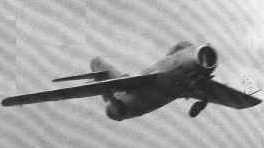
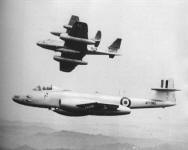
|
|
|
The Soviet command had learned about the presence of an unfamiliar machine in the air in the middle of August, 1951 when one of the pilots during an attack on a Sabre accidentally photographed a Meteor. Soon the intelligence department of the 64-th FAC received a message that the RAAF squadron of Meteors had arrived to Korea.
The Soviet (are printed with red italic) and Australian battle reports looked differently. The first battle between the Meteors and the MIGs, which ended without results, took place on the 25 August 1951. The Soviet pilots N.V.Sutiagin (ace of the Korean war, Hero of the Soviet Union) and G.I.Pulov, nevertheless, claimed two victories.
Four days after, on the 29 of August, about 11 o'clock in the morning eight Meteors were at a height of 10 km above Chonju when six MIGs appeared above them at a height of 12 km. The Meteors turned in order to keep the MIGs in sight, but at this moment a squadron commander Wilson noticed two more MIGs at a height of 9 km (the Soviet pilots used two level flight formation). Wilson dived for attack, the pilot Woodroff followed him, but quickly broke in a cockscrew dive. Both MIGs sharply dived, evading the attack. Wilson pressed the accelerator, trying to catch up with them, but at this moment his plane was shaken by a direct hit - an "invisible" MIG attacked him from the sun. It was a favorite tactics of the Soviet pilots!

Apparently,
this attack was made by the pair the MIGs piloted by L.K.Shukin
(on the photo at the left, later became Hero of the Soviet Union) and A.Astanovsky.
They had just pulled out of attack on Sabres at a greater height, and,
having noticed Meteors, immediately threw the machines on them. Inspired
by the successful attack, Shukin steeply climbed up and tried to repeat
it, but, having passed through a layer of clouds, lost the opponent from
sight. He claimed a victory, but…
Wilson was wounded, but managed to
keep control over his plane and get rid of the pursuer. Other two pilots
- Cedrik Thomas and Kenneth Blight hurried to the aid of the commander,
and several MIGs dived away after an unsuccessful attempt to get on tail
of the Blight’s aircraft. Wilson managed to make it to the base on his
severely damaged plane. Later such a big hole was found on one of the wings,
that a man might freely have crawled through it... In the meantime the
MIGs piloted by pilots N.V.Babonin and A.A.Svintitskiy succeeded
in a dog fight against the other four Meteors led by Jeffrey Thornton.
Thornton had noticed the MIGs attacking from the sun, and ordered to his
comrades on the radio to evade. However, when the four dropped the MIGs
off their tails, one of Meteors had disappeared. It was the machine of
the pilot Ron Guthrie. His Meteor was badly shot, Guthrie ejected and was
taken prisoner by the North Koreans (on a photo to the right - R. Guthrie
in a Chinese POW camp).
The victory was added to the Babonin’s account. He managed to set ablaze one of the engines of the Guthrie’s Meteor from a distance of 400-500 m, but the aircraft kept flying. Then Babonin came closer and, having shot a burst at the enemy fighter from 100-200m, saw the pilot ejecting from the disintegrating plane.
One week after (5th of September) the Meteors again engaged with MIGs. Six Meteors carried out an air reconnaissance next to the Chinese border along with two American F-80-Shooting Stars. In midday the commander of the Meteors Victor Kennon noticed a group of MIGs flying eastwards and obviously preparing for an attack. British pilot Joe Blyth, serving in RAAF, saw MIGS diving on planes flown by the pilots Dawson and Michelson. He tried to warn the comrades on the radio, but it was too late - six MIGs, pair after pair, got on the tail of the Meteors. Dawson was lucky to escape any hits, but the Michelson’s plane was strongly damaged, turned over and broke into an uncontrolled plunge. At a height of 3 km Michelson managed to regain control over the machine and broadcasted: "I am still flying… flying to the base". He barely chanced to make it home. His plane was extremely strongly damaged - holes were found literally everywhere – in wings, fuselage, the main fuel tank …

The Soviet
version of this battle, in which a Hero of Soviet Union of G.U.Ohay
took part, (on the photo at the left), looks differently. Only eight machines
out of twenty four MIGs of the battle group led by Ohay, participated in
this attack. Ohay himself claimed two Meteors, the pilot Tiuliaev
one more.
On the 10th of September, 1951several battles between the Soviet and the UN air forces occurred. The captain G.I. Ges added a Meteor to his account. In the Australian logbooks no battle on the 10th of September is mentioned. On that day the 77th squadron received an order to provide escort to 8 B-29 bombers of the US air force, but because of an adverse wind the Meteors had failed to meet the American planes at the right time. The joined flight lasted for only 15 minutes, then the Meteors were compelled to return to their base. An air battle between the American fighters from the escort and MIGs apparently took place, but, most likely, in a fever of the fight the Soviet pilots had confused some American planes (Thunderjets?) with Meteors externally similar to them.

On the 26th of September
12 Australians when flying in a big UN air force group were again attacked
by the MIGs. The plane of sergeant Armit was damaged in the first attack.
Lieutenant "Smoky" Dawson and the pilot Max Colebrook managed to counterattack
the MIGs. Dawson damaged one of the Soviet planes and Colebrook saw as
one of the MIGs left a tail of smoke, but it was not possible to see the
aftermath of it. Armit managed to reach the base on his damaged plane.
The
Soviet pilots N.V.Sutjagin (on a photo at the left, later became
Hero of the Soviet Union) and I.I.Jakushkin added to their battle
accounts one Meteor each. Obviously, that the victory over Armit, in particular,
had been assumed. The pilots Thomas
and Osborn got on the tail to one of the MIGs and obstructed him a safe
way to the north over the river Jalu – the frontier between China and Northern
Korea. The Australians themselves could not fly over Jalu as the UN planes
were categorically forbidden to appear above the Chinese territory. The
pilot of the MIG tried to turn to the north six times, but each time the
Australians did not let him do that. The Meteors drove the MIG southwards
for nearly 80 km, but, eventually, the "communist" pilot managed to escape,
having skillfully directed his machine to the sun and blinded the Australians.
In a series of battles which occurred at the end of October - November 1951, the Soviet pilots added to their accounts many victories over the Meteors: the last week of October, rich of dog fights - five Meteors, 2nd of November - one more, the 3rd - two more! According to the Australian logbooks no plane was lost during this period of time. It was logged that on the 24th of October 16 Meteors and 10 American "Thunderjet" planes when escorting 8 B-29 bombers near Sunchon were attacked by a big group of MIGs (40-70 machines). Six MIGs attacked the Meteors which did not let the Soviet fighters to break through the escort and to cause damage to B-29s. During this fight the Meteor of the pilot Hamilton-Foster was strongly damaged, but he managed to return to the base. On the 27th of October in a similar situation the Meteors damaged three MIGs in a dog fight, on the 2nd of November - one more (lieutenant Blyth). On the 3rd of November one more MIG was damaged by the pilot Colebrook, but two Meteors (the machines of the pilots Armit and Robertson) also incurred serious damage. Robertson hardly made it home and crush landed as his machine’s hydraulic drives had been destroyed.
The desirable victories were frequently
taken by the Soviet pilots for real ones (battle of the 27th
of October). It is obvious, that in the battles which were having place
on the 2nd and 3rd of November, the Soviet pilots
had not brought down any Meteors, but strongly damaged three of them. On
the 24th of October the Soviet pilots Shukin, Oskin (later
as well as Shukin - Hero of the Soviet Union - the latter claimed two Meteors
at once - he is second to the left on the photo showing him and the pilot
Pulov (participant of the fight on the 25.08.1951) near the grave
of a fallen comrade in May 1953 in China) and Filimonov
claimed
that 4 Meteors had been brought down.It
is impossible to establish, who from them managed to damage seriously one
of the Meteors. The heavy damage brought to the Meteors on the 3rd
of November was, probably, inflicted by the pilots Ohay
and Sinelnikov, which claimed two victories on that day.
On the 11th of November the pilot Robertson was lost. His Meteor collided in the air with the machine of the pilot Blight during a reformation. The latter managed to have ejected... On the 1st of December 1951 twelve Meteors when flying at a height of 6 km above Pyongyang, were attacked by 40-50 MIGs - again from above and again from the sun. In a rapid attack three Meteors were brought down - Don Armit (who twice had made it to the base on damaged machines before) perished, Bruce Thompson and Vance Drummond (a New Zealander in the RAAF) ejected and were taken prisoner. One more Meteor (the machine of the pilot Middlemiss) was damaged.



Soviet pilots - participants of the fight on the 1st December 1951 - (from left to right) S.F. Vishniakov, P.S. Milaushkin, A.F. Vasko
The battle lasted only ten minutes. Despite the obvious skill and bravery of the Australians and the fact that losses of 77-th squadron were not as great as it seemed in a fever of battles to the Soviet pilots, it became clear to the command of the UN air forces, that the heavy Meteor was not a match to the MIG in battle qualities. The only thing in what Meteors had succeeded, was their ability to sustain a significant damage. In several battles the 77th squadron had lost 4 machines, 6 more had been seriously damaged. Moreover, the greater tactical skills of the "communist" pilots allowed them to strike on Meteors completely unexpectedly. Fearing heavy losses, the UN air forces command withdrew the Meteors from interception operations. The plan of general Lobov achieved a full success. The failures of the 77-th squadron also had political consequences. The RAF Fighter Command, armed mostly with the Meteors, called into question the adequacy of these planes to the tasks of defense in Europe and came to a conclusion about a necessity of modernization of RAF.
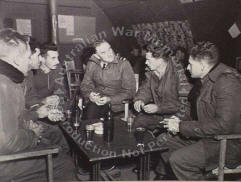
|
|
|
The moral spirit of the Australian pilots in Korea fell dramatically. The Squadron commander Streege was replaced by the pilot Susans. The Australian squadron was completely switched to ground attack. However it brought even more serious losses, than the dog fights against the MIGs. The flak of the Chinese and North Koreans, well trained by the first class Soviet instructors (and, maybe, partially by a Soviet AA unit attached to the 64th FAC), brought down eight Meteors only from January to April 1952. Pilots Brown-Gayford, Gillan, Robinson, Cranston, Cowper, Colebrook, Purssy were lost. Only one pilot - Hannan – managed to have ejected and was taken prisoner: as opposed to air battles at a big altitude, a pilot attacking a ground target simply does not have to time to eject…
Of course, in their new role the Meteors continued to encounter with the MIGS. On the 4th of May, 1952, during a flight southwest from Pyongyang a pilot Surman attacked a MIG and wrote down a "probable" victory on his account. Four days after a pilot Simmonds brought down a MIG attacking another Meteor at the same time. The Soviet logbooks show no losses amongst MIGs on this day. Probably, the Australians chanced to bring down and damage the MIGs of the United Air Army (UAA) of the Chinese People's Republic and the Korean People’s Democratic Republic.
Two Meteors were claimed by the Chinese pilots. Obviously, both sides wanted to give out the desirable victories for valid. In the meantime the Australian losses from flak continued to mount - in May - June the pilots Surman and Robertson were brought down, in July – the pilot Smith was lost. On the 27th of August a Britisher Bergh from the 77-th squadron was brought down and taken prisoner. On the 2nd of October was a British pilot Oliver Cruikshank was shot down during a fight against the MIGs. He ejected from his burning plane, but his parachute did not open.
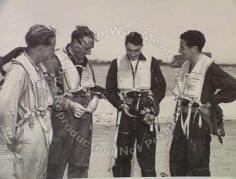
August 1952. O. Cruikshank (third from the left). Shortly after this photo had been taken he was shot down and killed
On the 2nd of October 1952 four Meteors escorted by Sabres tried to attack a ground target in the operation area of the MIGs. The UN aircraft were located in a due time by radars, and general Lobov personally guided four MIGs flying in a free hunt on the enemy (the commander of the group F.Fedotov, pilots V.Moloshny, R.Valkovich, K.Rybakov). Cruikshank was brought down by the captain Fedotov. The remaining Meteors and Sabres evaded a battle.
On the 24th of December the pilot Laurensen did not return to the base, on January 27, 1953 a Britisher Booth was lost. The losses were so great, that because of the shortage of skilled Australian pilots on service the 77th squadron began to accept more and more British pilots. Simultaneously the tour of duty for the RAAF pilots in Korea was reduced from nine to six months. In March, 1953, during an attack on ground targets the pilots Hillier, Rosser (RAF) and Chalmers were lost.
On the 27th of March 1953, the Meteors succeeded in a fight against the Chinese pilots above Sinmak southeast of Pyongyang. The pilots Hale and Irlam were conducting a patrol over one of the roads, used by the opponent for the logistics. Hale suddenly noticed a MIG attacking, as it seemed to him, two American Shooting Star planes. Already in attack on the enemy plane, he, at last, made out that all three planes were MIGs. Hale opened fire, and one of MIGs broke away from the formation and left to the north. Then Hale let out two missiles which passed between two remaining MIGs, having forced them to diverge in different directions. Hale tried to get on tail of one of them, but at this moment one more MIG passed above him, trying to attack the Meteor from the rear very poorly viewed from the Meteor cockpit. Then for some time the MIG flew parallel to the Hale’s Meteor approximately in 15 meters ahead of him. Hale could even see the pilot in the MIG cockpit! He slightly turned this aircraft and opened fire. Fragments of fuselage burst out of the plane, it turned over and began to fall from a height of about three kilometers. At that moment when Hale saw black smoke pulling from the shot enemy plane, two more MIGs attacked his Meteor. Hale sharply dropped speed, and the MIGs slipped above him, having found themselves in an extremely vulnerable position. However, using their advantage in the climb rate, they quickly disappeared from the Hale’s view. Hale managed to shoot at them and it seemed to him, that the white smoke burst out of one of the MIGS, but at this moment he ran out of ammunition. He safely returned to the base. The plane of the pilot Irlam who accompanied Hale was strongly damaged right at the beginning of battle. He, nevertheless, managed to make it to the to base in Kimpo with the broken compass and being guided by the radar. 112 holes were found in his machine! Two more Australian pilots - Hubble (the wing commander) and Rees - took part in this fight.
During the last several months before the armistice in Korea the Australians lost two more planes to the enemy flak (the pilot Dolittle was lost and Pinkstone was taken prisoner). One more pilot on a strongly damaged machine made it to one of the islands in the sea of Japan which was under control of the United Nations.
According to the data published in the second half of the 1950-ties, the 77-th squadron RAAF lost in Korea 22 planes, 5 from them in air battles and 17 to the enemy flak. Later (data published in 1995) it was stated that 53 Meteors were lost. The book "Odd Jobs. RAAF Operations in Japan, the Berlin Airlift, Korea, Malaya and Malta. 1946-1960" (1996), included the most complete statistics of operations of the 77-th squadron in Korea. According to this data, 5 machines were brought down in battles with MIGs, 20 by flak, 13 lost in accidents, 7 - seriously damaged in air battles. The Soviet pilots claimed 28 Meteors (and not a single MIG was lost in the battles against the 77-th squadron). It is obvious, that the damaged planes or the ones outwardly resembling the Meteors had been included in this figure. We shall note, that significant divergences between the data of opposing sides are typical for statistics of all air wars without exception.
The main lesson learned during the air war in Korea consists of the fact that the USSR and the West had been convinced of the parity of their air forces. Based on the technological and industrial power of the USSR the ability of the "communist" block air forces to cast numerous fighter forces into a battle and to inflict heavy losses to the enemy aircraft became a warning to any potential aggressor.
However, we shall not overlook, that the inspirer and the initiator of war in Korea was the USSR, standing up behind the backs of Kim Ul Sung and Mao Tse Dung. Joint efforts of many countries of the West and the third world managed to have stopped the war and not to let it develop into a global conflict. The Australian airmen brought a worthy contribution to it.
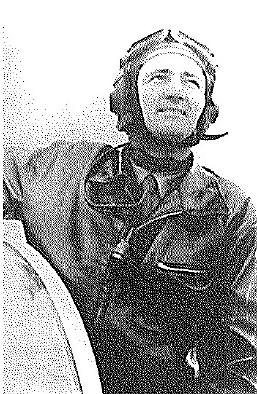
S.M. Kramarenko - member of the 1st December 1951 battle - before takeoff
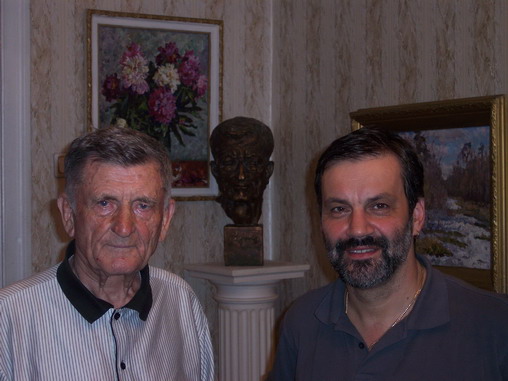
S.M. Kramarenko in his Moscow flat with the author of this page and the translator of his memoirs
I.Seidov. Meteory Terpiat Fiasco.
Mir Aviatsii. No 2, 1995
N. Barret. With the Australians
in Korea. Chapter 10. MIGs vs Meteors. Pp 107-120. Canberra, 1954
R. O'Neil. Australia in the Korean
war 1950-53. 1985
The Oxford Companion to the Australian
Military History. 1995 D.
Newton. CLASH OF EAGLES. Australian
airmen from WWI to Vietnam, 1996
S. Eather. Odd Jobs. RAAF Operations
in Japan, the Berlin Airlift, Korea, Malaya and Malta. 1946-1960. 1996
G. Odgers. Remembering Korea. Australians
in the War 1950-53. 2000